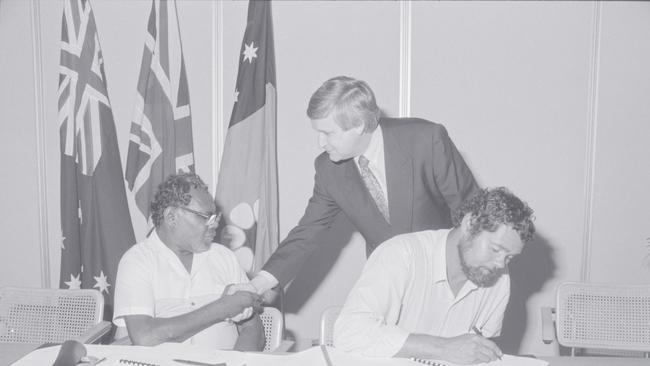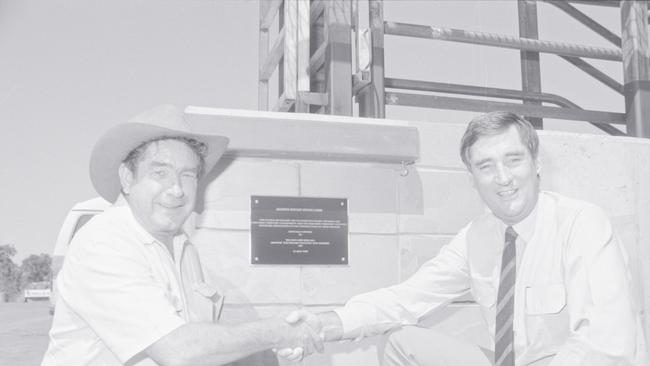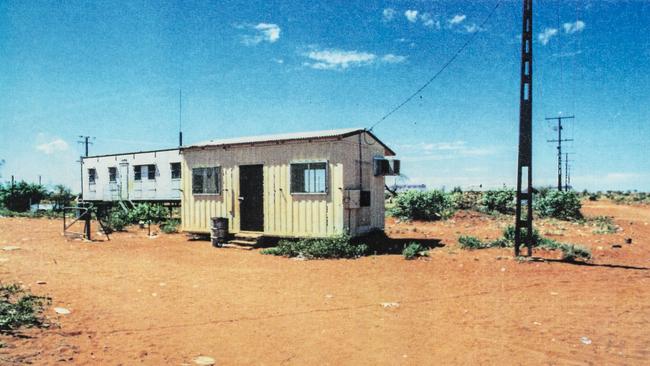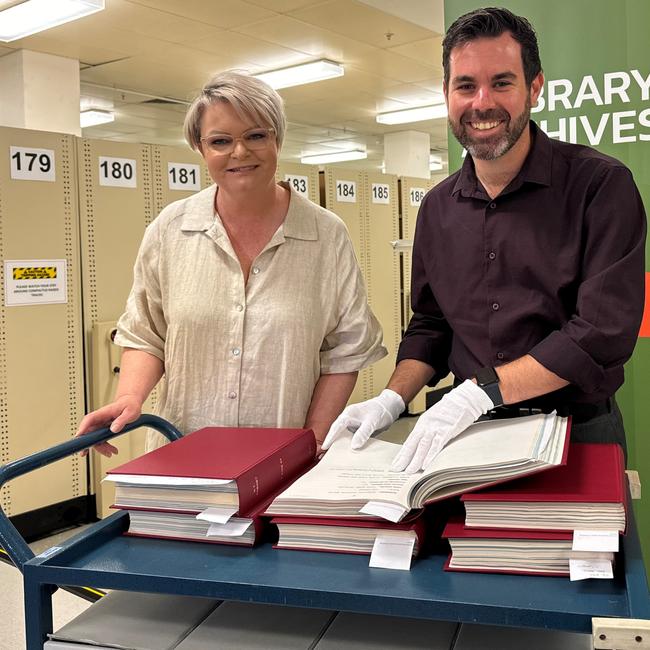Cabinet document dump reveals Government’s key priorities in 1993
Key cabinet submissions and decisions from 1993 have gone public. Read what the government was getting wrong back then.
Northern Territory
Don't miss out on the headlines from Northern Territory. Followed categories will be added to My News.
Fifteen years after self government, the 1993 Perron Ministry was brim-full of big names and bigger egos all looking to leave a mark on the Northern Territory.
Chief Minister Marshall Perron would become the first political leader anywhere in the world to pass euthanasia legislation, only later to be overturned by the Commonwealth.
His deputy Barry Coulter was striving to secure hundreds-of-millions in investment to build the Alice Springs to Darwin railway and Shane Stone was still two years away from succeeding Perron in the chief minister’s job.
Other big reputations in the nine-member, all-male cabinet were former chief minister Steve Hatton and respected ministers Mike Reed, Fred Finch, Daryl Manzie and Eric Poole.
Transport and Works Minister Max Ortmann later gained national prominence when he tried to throttle an ABC reporter with a microphone cord.

Nationally, the Australian economy was limping its way out of Paul Keating’s “recession we had to have”.
The Territory economy had the country’s second lowest unemployment at 7.7 per cent compared to Victoria’s 12.2 per cent and it was still benefiting from construction of Parliament House, which had its first sittings in 1993.
Official records released under the 30-year cabinet disclosure rule, the Information Act 2002, showed the NT Cabinet considered 444 matters during 1993, ranging from sponsoring the Aboriginal All Stars versus Collingwood AFL match to drafting land use plans for petroleum storage facilities at East Arm.
As is usual with these releases, the really juicy details are kept from the public pending an access review after about 15 years.
Matters that will remain confidential until at least 2039 include discussions around assistance to British Aerospace Australia to relocate its light armoured vehicle fit-out operations to Darwin and plans for construction of a ship lift facility, which, 30 years later, has still not been built.

The year’s first cabinet meeting in January began with discussions around securing the acquisition of Glen Helen Station for incorporation into the West MacDonnell National Park.
Revenue creation is never far from the minds of NT politicians and Cabinet also considered developing the Mt Todd gold mine near Katherine with the Jawoyn Association.
The origins of the NT government’s disastrous investment in roads to support Seafarms Group’s Project Sea Dragon prawn farm project had its origins in 1993 with the then government looking to grow the NT’s aquaculture options.
The outlays on this occasion were tiny compared to the $60m the NT government committed to the proposed prawn farm’s roads to nowhere.
In 1993 Cabinet approved about $560,000 over three years to research the commercialisation of two new aquaculture species – the golden snapper and mud crab.
Thirty years later, both went on to become iconic NT seafood products.
The cabinet submission also traces the origins of barramundi as a premium commercial NT product.
It said since the first commercial sale of barramundi in 1991, the industry had six licensed barramundi farms as well as four new pearl farms.
It said the newly formed Roper River Prawn Farm and Darwin Barramundi Farm employed more than 70 people.
The Darwin cattleyards at Wishart also opened in 1993.

As it is today, home ownership was a significant issue in the 1990s, particularly with interest rates soaring to never-before seen highs early in the decade.
Cabinet discussed establishing the NT’s first shared equity home ownership scheme.
To be eligible, the applicant’s gross family income had to be between $300-$700 a week and contribute 10 per cent to the value of the equity.
In the shadow of the Muirhead Royal Commission into Aboriginal Deaths in Custody, the NT Government was also looking at improving remote medical infrastructure through upgrades to health centres.
Then Health Minister Mike Reed brought before cabinet a $1m plan to replace five remote health clinics at a cost of about $150,000 each.
“Many health clinics in rural areas are either one room tin sheds (Katherine District) or ‘silver bullet’ caravans (Alice Springs and Barkly districts) and are now structurally inappropriate and of an unsatisfactory standard to meet the minimum requirements for the delivery of health care,” the submission said.

“A number of these facilities are in appalling condition and varying degrees of dilapidation. “There are no associated services such as toilets and laundry facilities within the clinics mentioned.
“The clinics themselves are a health hazard. The poor working conditions are an important factor contributing to the difficulties encountered in the recruitment and retention of staff who work in remote communities.
“There are a number of children and adults presenting with life threatening conditions each week (approximately 10 per cent of clients). It is essential that the Aboriginal health worker/nurse is able to satisfactorily examine the patient and contact a doctor for medical consultation or aerial evacuation.”
Also in the health space, Cabinet approved a one-off $530,000 spend vaccinating children for haemophilus influenza type B infections, including meningitis.
“There is a small but active anti-immunisation lobby in Darwin which will voice its opposition, but its arguments would be easily countered,” the submission said.

Managed by Library and Archives NT, the 1993 records document milestones in the Northern Territory’s history.
Minister for Arts, Culture and Heritage Chansey Paech described 1993 as a ‘dynamic’ year for the NT, remarking on plans for the Alice Spring to Darwin rail link being the ‘talk of the Territory’.
“Progress was happening on all levels with key milestones such as the opening of the library at the NT University; the first-ever arrival of an Airbus A330; and an export stockyards facility at Berrimah setting new standards,” he said.
“Releasing the Cabinet Records from 30 years ago means we can now explore the issues considered by the Territory’s government of the day.
“These records are historically significant, as they are not only a trip down memory lane, they help us to understand how our past defines our future.”





